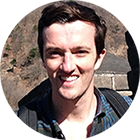I was messing with Facebook live last night (it’s mesmerizing) and caught a broadcast by this woman who I’d never heard of and who looked to have a mostly female fan base.
She began talking about how she worked to do less when she had some big, important thing coming up. She said instead of being busy, and worrying about the millions of things she needed to do and how much more she could cram into one day, she thought more about how she could rest and meditate more.
(She went on to speak about how this gave God more time to do his work but this is a post about the counter-intuitive idea of doing more by doing less so I am leaving the God part out.)
Her talk reminded me of the espoused philosophies of so many other prominent thinkers and achievers.
Hedge fund king Ray Dalio said that he meditates for 20 minutes every morning … “unless I have a really busy day, then I meditate for 40 minutes.”
LIfe hack guru Tim Ferriss has based much of his career and educational content on how to do more with less.
Over 100 years ago one of the first and most influential contemporary “self-help gurus” was author Wallace Wattles who advocated for more time spent in meditative thought and an understanding of the difference between effectiveness and efficiency of action on the road to wealth creation, an idea Ferriss would also “use” in his bestselling book The Four Work Week.
The list goes on. The point is: this idea isn’t new.
It’s quite easy to get swept away in the busy trap and to feel guilt if you didn’t do a sufficient number of things today and then think, “tomorrow I’ll wake up even earlier and fit even more in!”
But it’s harder to feel this pressure if your goals change and your success is measured entirely on impact.
The highly impactful chess player can win in only a few, highly pre-meditated moves. It’s not chance. To be this effective the player needs to spend more time in study and meditation on technique.
So this should be the aim, always: “what is the straightest line to my goal? What are the smallest number of moves to get me there?”
Rest for as long as it takes for you to answer that question.
Then follow that path.
